Overview
STEM careers
Time
Materials
Per Team:
|
Consumables:
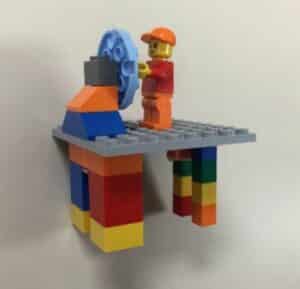 Levitating train ready for testing. |
Relevant Terminology
Attractive force: A force that attracts objects toward each other. Levitation: The raising of an object into the air without physically supporting the object.
Maglev: Magnetically levitated vehicle.
Magnet: A piece of iron, iron ore, or compound containing iron in which the atoms are arranged to display a magnetic field.
Magnetic field: A region in the space around a magnet where the magnetic force can be felt.
Magnetic pole: One of two ends of a magnet where the magnetic lines of force are concentrated and are the strongest. Magnets have two poles: north and south. Like poles repel each other, while opposite poles attract.
Magnetism: The property of matter that allows an object to attract iron or materials containing iron, such as steel.
Repulsive force: A force that pushes two or more objects away from each other.
Introduce
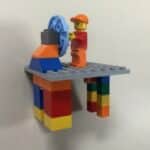
Levitating train ready for testing.
GETTING READY
Advance Preparation
Use the following instructions to pre-attach the magnets to the bricks. Make certain that the polarities of the magnets are aligned, with the same pole facing up.
Track Setup
Use LEGO bricks to create a segment of track for each team. Use wider LEGO pieces to create a stable base, and 1 x 2 bricks to build four support columns. Attach a 1 x 8 LEGO plate to the top of two columns and repeat for a second length of track (see Photo 1).
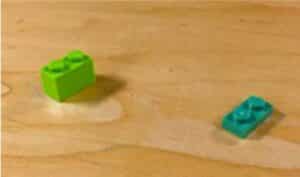
LEGO vocabulary: The block on the left is a 1 x 2 brick; the one on the right a 1 x 2 plate.
Tape neodymium block magnets (1″ x 1/4″ x 1/16″) to the top of the track using the transparent adhesive tape. IMPORTANT: Be sure to align the magnets so the magnetic poles face the same direction.
Train Setup
Use tape to attach a neodymium block magnet (1/2″ x 1/4″ x 1/16″) to the bottom of a 2 x 3 LEGO plate (see Photo 2). The magnet should be located in the center of the plate to allow other bricks to be added to the bottom for balancing. Attach a 1 x 2 brick to each side of the magnet. IMPORTANT: Be sure to orient the magnet so that it is repelled by the magnets on the track.
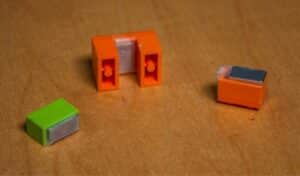
Photo 2. The starting unit for each train.
To set up additional train building supplies, attach a neodymium block magnet (1/2″ x 1/4″ x 1/16″) to the bottom of four separate 1 x 2 LEGO bricks (see Photo 3). If you attach the magnets to the bricks, participants will be able to easily connect additional magnets to their train.
INTRODUCTION
Have you ever played with magnets? When you have two magnets, you can arrange them so that they either push against each other (repel) or pull toward each other (attract). Engineers can use this scientific principle to create very fast-moving trains.
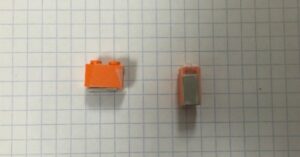
Photo 3. Setup of 1 x 2 LEGO bricks.
Engineers have developed magnetically levitated trains called maglev trains that move without touching the ground. These trains use powerful magnets to lift the train upward and propel it forward. The Shanghai Maglev Train is the fastest train in operation, reaching a top speed of 270 mph.
Instructions
Introduce the design challenge: Build a magnetic levitating train that can balance on a magnetic track without falling.
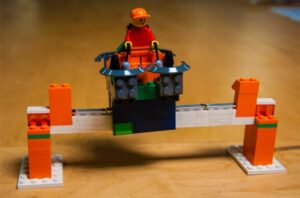
Levitating train in action.
Organize participants into teams of three or four people. Introduce the materials. Give each team their track section and their train starter (see “Getting Ready”). Challenge the team to balance their train on the track using only the LEGO pieces and magnets supplied.
Planning Phase: Talk to the teams about why it is important to plan their train’s design before they build it. Encourage them to think about what design elements will provide the most stability for the train.
- How will the train balance on the track? What can make it more stable?
- How heavy should it be? (If it’s too heavy, it may not levitate.)
Building Phase: After they plan their design, the teams should construct their train using the LEGO blocks and magnets provided.
Testing and Modifying: Once their train is built, have them test it on the track to see if it levitates. If their design doesn’t work as intended, encourage the teams to return to the planning phase by thinking about what can be improved. Have them repeat the planning, building, and testing process until they complete the challenge.
ACTIVITY VARIATIONS
- To extend the activity, have teams improve their design using fewer materials.
- Create a timed team challenge. See which team can accomplish the challenge first.
- Make the activity more challenging: limit the number of LEGOs and magnets available to encourage the teams to design under constraints.
- Create a competition to see which team can levitate the train the highest while keeping it balanced.
TROUBLESHOOTING
- The magnets won’t separate. The magnets used in this activity are very strong and will attract to each other, which can make building difficult. Slide them apart rather than pulling. Make the builders aware of this so that they can plan for it in their design.
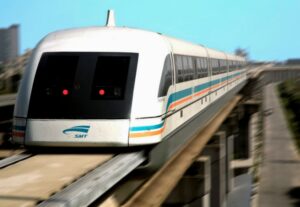
Shanghai Maglev Train. Source/credit: www.helenwongstours.com
The trains don’t levitate. Double-check to make sure the magnets on the train are oriented so that the train will be repelled by the magnets on the track.
- The magnets keep falling off the train/track. During the build, the magnets may come loose from the track or the train. If this happens, just reattach them using more tape so that the magnets stay secured to the LEGO blocks.
- The train doesn’t stay balanced on the track. Make sure that the weight is evenly distributed. Have extensions on either side of the train that extend below the track to change the center of mass. Encourage the team to use additional magnets and weights to help balance the train.
Guiding questions
GUIDANCE FOR YOUNGER CHILDREN
QUESTIONS TO ASK AFTER THE ACTIVITY
- What did you think about when you were planning your train design?
- What were the first steps you took to balance your train?
- Did all of the trains that were created look the same? Which designs worked best?
- If you were to try making a longer train, do you think you’d have to change your design? Why or why not?
GUIDANCE FOR OLDER YOUTH AND ADULTS
QUESTIONS TO ASK AFTER THE ACTIVITY
- What was your plan before starting the challenge? Did your strategy work?
- What was the result of your first test? Did your train stay balanced or did you change your design?
- How did you improve your design to make it more balanced?
- Did you learn from any of the other teams’ strategies? Did you add any elements of their designs into your design?
Engineering & science connections
GUIDANCE FOR YOUNGER CHILDREN
Engineering Connections
Engineers are great at problem solving. One big problem that they have solved is how to make a train move as fast as a plane. Trains that move in the traditional way cannot go as fast as a plane. They use the friction generated between the wheels and the rails to move them forward down the track. But as the train speeds up, the wheels start to slip on the track, which causes the train to lose speed. This slippage limits the speed of the train.
To solve this problem, engineers decided to design a train that did not use wheels to propel it forward. Their solution was a train that floats above the track using powerful magnets. Engineers spent years developing and testing the technology to propel a maglev train forward at high speeds. Today, maglev trains are able to move nearly as fast as a plane. They reach speeds of 375 mph!
Science Connections
Did you know the earth is one big magnet? The earth’s core is believed to be a mix of iron and nickel, giving the earth its own magnetic field. Earth behaves like a giant bar magnet with one pole in the Arctic (near the North Pole) and another pole down in Antarctica (near the South Pole). If we freely suspend a magnet, the magnet will always rest in the north-south direction. This is because opposite magnetic poles attract; so the north magnetic pole of our magnet is attracted to the south magnetic pole of Earth. Hundreds of years ago, scientists also noticed how a freely suspended magnet always pointed in the same north-south direction. This discovery led to the invention of the compass. A compass guides travelers if they are ever lost because it always shows which direction is north.
GUIDANCE FOR OLDER YOUTH AND ADULTS
Engineering Connections
Since the invention of steam-powered trains in the 1800s, trains have been the domain of mechanical engineers. Mechanical engineers were responsible for designing the key components of a train, including the engine, axles, and wheels. However, the latest innovations in train technology have come from the work of electrical engineers, through the design of maglev train technology.
Maglev trains have a surprisingly few number of moving parts compared to traditional trains. These innovative trains instead rely heavily on new electrical technologies designed by electrical engineers, including superconducting magnets, efficient power systems, and reliable control systems. While there have been amazing advancements with this technology, engineers continue to make many breakthroughs. These innovations improve the ability of the maglev system by increasing speed and reliability while lowering the cost. As costs become lower, more communities will be able to construct maglev trains.
Science Connections
In the activity, you were able to levitate your LEGO train car using neodymium block magnets. These are considered “permanent” magnets because they don’t need electricity to produce the magnetic field. Although strong, they aren’t strong enough to power a maglev train.
Scientists found that they could create stronger magnetic fields by sending an electrical current through a spinning coil of wires, creating an electromagnet. Electromagnets can be turned off and on, and can also have the polarity reversed by switching the direction the coil is spinning. So the north pole can become the south pole and vice versa. Maglev trains are pulled forward using polarities that attract each other at the front of the train. As the train travels, the electromagnets at the back switch the direction of the spin so that they create a magnetic field that pushes the train forward.
Activity adapted from the Saint Louis Science Center. All rights reserved.
Supplemental content adapted for Dream Big Activities by Carnegie Science Center.
Funding for this Dream Big Activity was provided by a generous grant from the United Engineering Foundation.

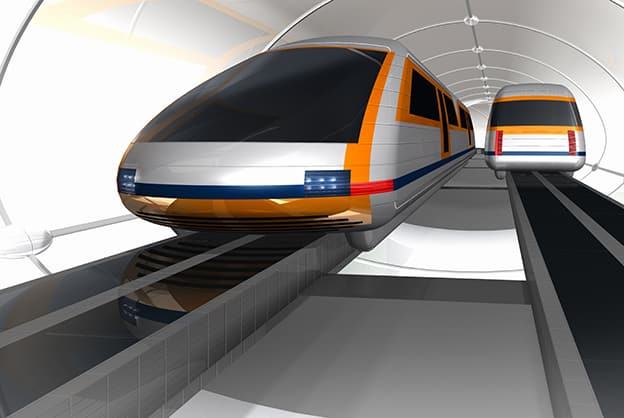
0 Comments